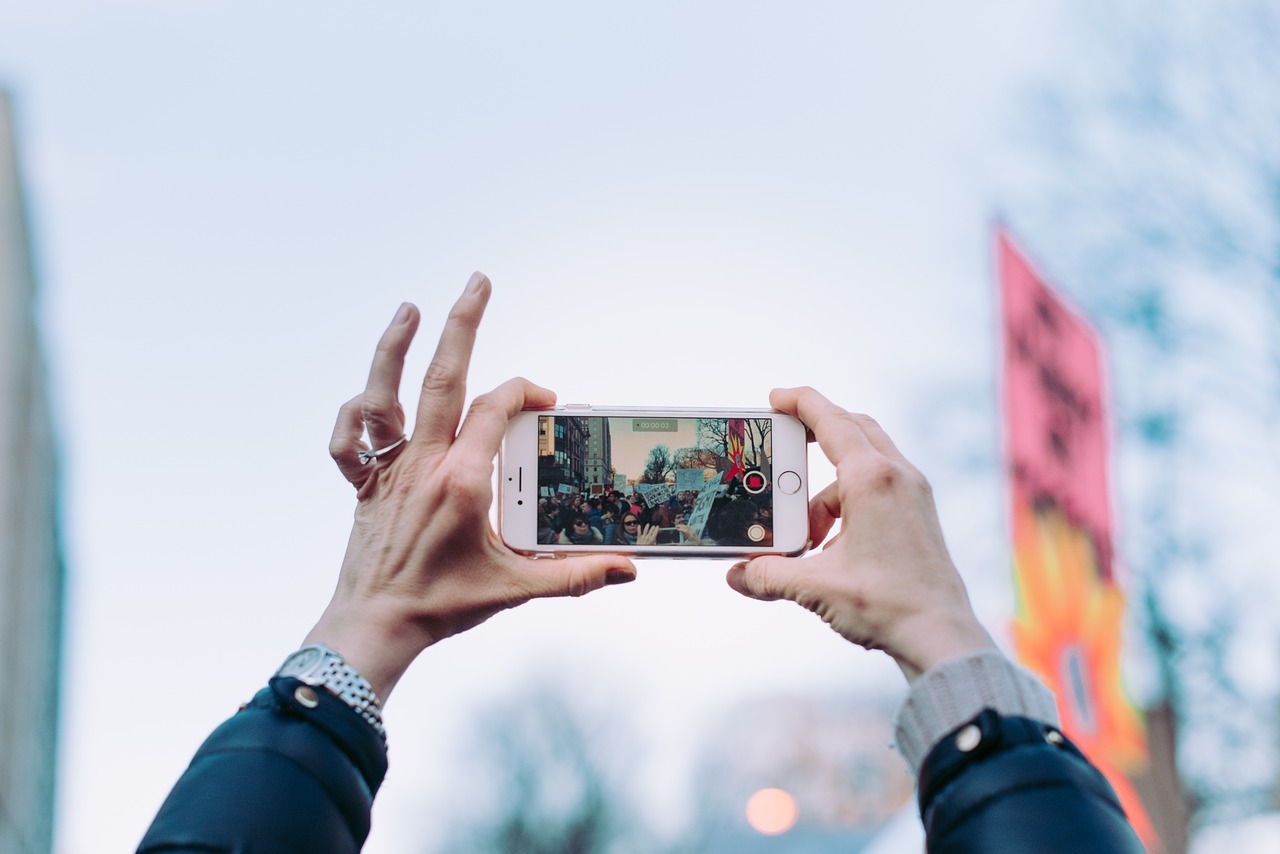
These days, nearly everyone has a smartphone—and if you bought your smartphone in the last few years, it probably shoots great video.
It might seem obvious, but to record high-quality video on your phone, you need to learn how to … film. Taking video with a phone isn’t too difficult; the techniques are almost the same as those used with other devices, such as camcorders, 8mm cameras, and whatever else you might have used through the years.
From Ordinary to Amazing: Shooting Great Video with Your Phone
-
-
You need good audio.
After watching a few instructional YouTube videos, you can edit ordinary, dull footage into something that’s engaging and exciting. Unfortunately, this isn’t the case with audio—there’s no easy way to save it if it’s of poor quality to begin with.Consider adding a second device, like a Zoom H1n or even another mobile phone, to record audio while you’re shooting video. The sound will be crisper and clearer, and you won’t have to struggle to hear the action later.
-
You need a clean lens.
You want to shoot video like a pro, so don’t make this rookie mistake. If there’s a smudge, a fingerprint, or water on your lens, your phone won’t be able to take in the action, and neither will you when you go to edit the video later. -
You need storage space for the video files.
Video files take up a lot of room on your phone. Free up storage on your phone by choosing a place to store video (like iCloud, Google Drive, or an external hard drive).Storage is cheap these days, and you don’t want to miss capturing a moment just because you’ve run out of space.
- You should be cautious about using digital zoom.
Digital zoom is convenient and easy to use, but there is a downside. When you zoom in, you lose pixels and sharpness. When you zoom into a scene digitally, you tell the camera to focus only on some of your video’s pixels, just as if you had zoomed in on the footage manually while editing. - You need steady hands or image stabilization.
While you can always use a tripod to stabilize your filming, there are tools already built into your smartphone that can correct for shaky filming.The newest generation of smartphones from Apple and Samsung have optical image stabilization, and Google’s Pixel phones come with digital image stabilization. These tools use sensors within your phone to compensate for unsteady hands, whether you’re standing still or on the move.
- While you can always use a tripod to stabilize your filming, there are tools already built into your smartphone that can correct for shaky filming.
The newest generation of smartphones from Apple and Samsung have optical image stabilization, and Google’s Pixel phones come with digital image stabilization. These tools use sensors within your phone to compensate for unsteady hands, whether you’re standing still or on the move.
It’s worth the effort to learn about the advanced settings that your phone offers for video. The most recent iPhones offer four video settings that vary in the number of frames they capture per second, and in how many pixels they capture per frame. They are:
- 720p at 30 fps
- 1080p at 30 fps
- 1080p at 60 fps
- 4k at 30 fps
- You should use airplane mode.
Phones perform a lot of functions, even when you’re not actively using any apps. When you’re using your phone as a video camera, you don’t want to receive a call or notification. Turn your phone to airplane mode while shooting video so you can stay in the moment, without distractions or interruptions.Turning on airplane mode will also save your battery life so that your phone won’t die before you’re done shooting.
- You should make sure your battery is charged.
On that note, charge your phone before you start filming. If you get a low battery warning while you’re shooting, you’ll have a hard time focusing on your work, and you may even be unable to finish recording your video. - You should think about lighting.
The built-in flash on a smartphone can bring some light to a dark scene, but it’s better suited for still shots than video. Consider shooting your footage during the day, or investing in an external light source for filming after dark. -
You should be careful about shooting vertical video.
Think about the screens on your computer and TV. They have a horizontal orientation. If you shoot your video vertically, your video may look awkward on other devices. Consider how you want your video to be watched before deciding on vertical or horizontal.
-
The Takeaway
The best camera is the one that’s with you. There are many high-quality, high-priced cameras that can shoot movie-quality video, but they might not be in your pocket when that perfect moment comes.
Learn the basics for shooting video on your phone by experimenting in low-stakes moments so you’ll be ready when the time comes. Once you have the basics mastered, you can start using advanced options to find the settings, techniques, and storage solutions that are right for you.
This Article was written by
It is a long established fact that a reader will be distracted by the readable content of a page when looking at its layout. The point of using Lorem Ipsum is that it has a more-or-less normal distribution of letters.
